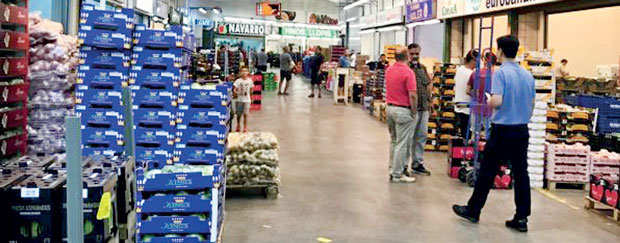Reply To:
Name - Reply Comment

La Almunia de Doña Godina, a small town situated in the fertile plains of Valdejalón in northwestern Spain, was buzzing with unusual activity one late afternoon a few weeks ago, when I was there to visit the headquarters of Cosanse, a local agricultural cooperative.
Unlike typical Asian Development Bank (ADB) missions to agricultural cooperatives in South Asia, where you normally meet a group of farmers who often have little to say to visitors, I entered nothing less than a modern corporate set-up. Cosanse has a large meeting room, high-tech cold chain and storage infrastructure, in-and-out rolling delivery trucks and facilities for sorting, grading and packaging perishable products.
Owned by about 800 farmers, Cosanse’s day-to-day operations are managed by 75 full-time paid employees, including agricultural engineers and marketing experts. The cooperative receives some subsidies, but it is a for-profit venture. The farmer-owners jointly share profits and bear losses.
The technical experts are involved in all stages of upstream agricultural activities: growing, harvesting and handling. Many agricultural cooperatives in South Asia do the same, but the distinct feature of Cosanse is its focus on joint marketing.
The Spanish cooperative pools the products from all members and sells them on their behalf following certain terms and conditions. Members thus benefit from economies of scale on marketing expertise – a very interesting approach for developing countries in our region.
For Cosanse, scale applies to both product processing and marketing. Small cooperatives often lack this scale advantage, but other Spanish cooperatives have found a way around this by joining forces to form larger cooperatives.
A good example is Valencia-based Anecoop, which brings together 68 small cooperatives to integrate, coordinate and jointly market the products of its 27,000 member farmers. Like Cosanse, Annecop is also fully owned by its members and run by professionals to maximize profit.
Scale advantage is also required at the selling point – markets must be large enough to absorb large quantities and keep prices buoyant. If the market is not big enough, selling large amount of products pooled by cooperatives from farmers can bring down prices and hurt farmer incomes.
In Spain, the combination of cooperatives with strong marketing skills and wholesale markets— large physical facilities supported by complementary activities that help reduce transaction costs—has cut some middlemen. Farmers produce, cooperatives integrate and wholesale and markets distribute to different end-users through retailers and traders. This direct link between farmers and markets, set up by the cooperatives, protects farmers—and consumers, too—against seasonal glut or scarcity that affects prices.
The experience of Cosanse is very interesting for Asia, which itself has a long history of agricultural cooperatives. For instance, in 1904 then British-ruled India enacted the Co-operative Credit Society Act, which gave impetus to the cooperative movement in South Asia.
Asian cooperatives need more support
Asia has many examples of cooperatives like Anecoop, but they are not engaged in marketing. The Kotwali Thana Central Co-operative Association formed in the early 1960s in Bangladesh ultimately failed to sustain itself as a for-profit entity because it was unable to market the products of its members, despite drawing global attention as a comprehensive model of rural development.
In many countries in developing Asia, the gains from consolidated efforts by farmers are lost due to their fragmented and disjointed efforts on marketing.
To turn into financially viable corporate entities like Cosanse or Anecoop, the existing Asian cooperatives need more public support in three interrelated areas.
First, governments must enact policies that give cooperatives more access to credit so they can build adequate storage facilities. This is quite common in the EU, where cooperatives receive different forms of public assistance for marketing, not only just for production.
Second, the currently observed “volunteerism” in managing cooperatives needs to be replaced by corporate principles, with a clear demarcation between equity holders and management personnel, all of which must be accountable for
their decisions.
Microfinance institutions—among them the Grameen Bank—and NGOs in many Asian countries have organised people in groups and delivered ownership to beneficiaries, thus providing the promising social infrastructure for a paradigm shift on agricultural cooperatives in the region. This vision must be supported by forward-looking government policies and
technical support.
Last but not the least, the absence of well-developed wholesale markets, coupled with poor transport connectivity, makes it very difficult for farmers to sell their products at a fair price in Asia. This problem equally affects the marketing activities of cooperatives. The best way forward is to set up large, modern marketing hubs to connect cooperatives with wholesale markets, where cooperatives sell the products of all
their members.
While such markets are being developed, governments can support cooperatives by connecting them with large institutional buyers like public hospitals, schools and universities and even big private sector clients such as hotel and supermarket chains.
Whether Asian agricultural cooperatives learn how to think like corporations will define the future of agribusiness in the region, as it did in Spain, which is now Europe’s breadbasket.
(Md. Abul Basher is Natural Resources and Agriculture Specialist, Sustainable Development and Climate Change Department at Asian Development Bank)